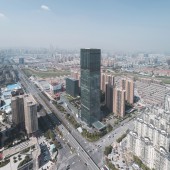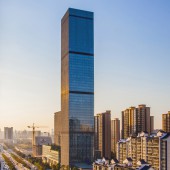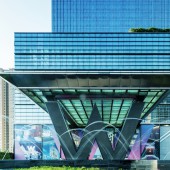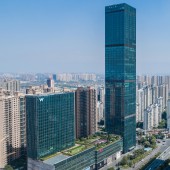Yunda Central Plaza Mixed-use Architecture by Hpa Architects Engineers and Dev. Consultants |
Home > Winners > #75184 |
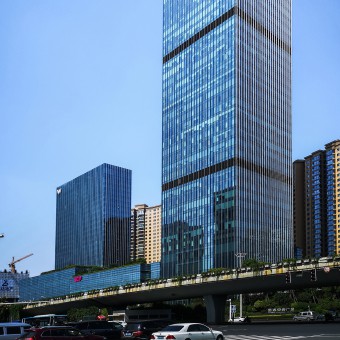 |
|
||||
| DESIGN DETAILS | |||||
| DESIGN NAME: Yunda Central Plaza PRIMARY FUNCTION: Mixed-use Architecture INSPIRATION: From macro to micro, urban farming to green building standards and materials, the design of the building is to address the sustainable, smart and interactive component for proofing future. It is destined to become a highly sought out destination for both travelers and businessmen. With two of the most popular hotel chains available and many options for meetings, entertainment and luxurious shopping. This complex will draw visitors from far and wide. UNIQUE PROPERTIES / PROJECT DESCRIPTION: Yunda Central Plaza is a 123,031 square meters landmark. It is an office, retail and hotel destination featuring six levels of shopping anchored by two towers. The 100 meter tall W-Hotel tower sits alongside an iconic 250 meter tall tower housing a St. Regis hotel which is one of the tallest approved skyscrapers in Changsha. This development was the fifth largest twin hotel tower project in China and the second largest in central China. OPERATION / FLOW / INTERACTION: At 250 meters tall, Yunda Central Plaza is a carrier of the top brand hotel, enjoying luxury spaces, the office building has an exclusive lobby and elevator system, the design of the large curtain wall provides extremely high quality views. The height of the standard floor is 4.07 meters; the speed of the elevator is 6m/s. The whole building has 5000 car parking spaces. The roof space on the top of the mall podium provides an exclusive leisure environment for the user of the office building. The appropriate landscape design "active" the space, creates an "escape" opportunity for the hustling people. In the meantime, the garden also sets a "link" between two towers, which is an organic part of the transport system of the building. PROJECT DURATION AND LOCATION: This project in Changsha, China, which was led by our office branch in Shenzhen, its inception started in 2007. The construction process was finished in 2016. FITS BEST INTO CATEGORY: Architecture, Building and Structure Design |
PRODUCTION / REALIZATION TECHNOLOGY: a.Sky Garden It sits on top of the podium with the total area of sky & roof gardens covering over 50% of the total roof area. With the combination of sustainable elements and surrounding greenery, it can reduce the heat energy demand in heating and cooling of internal spaces. The modern and international architectural style expresses the spirit of the high-tech age with a material palette of glass and aluminum. The podium canopy is made of tempered glass. The whole facade is designed on a strict rectangular grid with strong vertical emphasis. b.Low Emissivity Coating Glass The modern and international architectural style expresses the spirit of the high-tech age with a material palette of 3 layers of glass and aluminum. The podium and towers are made of glass and designed on a strict rectangular grid with strong vertical emphasis. Besides, with the use of low energy glass and other recycled materials, it could effectively lower the building's solar intake. c.Green Landscape & Green Roof Throughout the building, especially the green landscape on top of W Hotel and Shopping Mall, a green landscape not only draws people to the roof garden area, but also reduces solar intake and enhances air quality. SPECIFICATIONS / TECHNICAL PROPERTIES: The total project site area is 123,031.160 square meters, inclusive of the area for residential towers on the northern part, with a total gross floor area of approximately 660,000 square meters: thus a plot ratio of 6.73. The 350,000 square meter mixed use development south part will house the two 5-star international hotel brands, luxury retail shops and grade A offices. TAGS: Mixed-use, Changsa, St. Regis, W Hotel, Commercial RESEARCH ABSTRACT: Yunda Central Plaza was proposed at the time of soaring trend of real estate development in Changsha and different urban regions in China. The developer and its partners were ambitious in establishing a leading and unprecedentedly high-end mixed use development that would house the two 5-star international hotel brands, luxury retail shops and grade A offices anchored by two towers. Against this backdrop, hpa took up the pioneer role and our principal architects and directors carried out in-depth and comprehensive researches on the contextual background in order to respond to the local needs and requirements from the clients accurately. Our principal architects went to a vast array of mixed use development projects in different key cities in mainland China such as Changsha and Shenzhen, outer cities and states such as Hong Kong and Dubai to conduct extensive site investigation and inspection. The research period was not limited to the time prior to the design plan submission or approval procedure, but it lasted across all stages. Some key parts of the development were concerned greatly and required considerable planning containing the establishment of the biggest Ballroom in Changsha; the designs of hotel floor plans, interior structure, car parks, loading areas, storage places in basement; and also the hotels’ linkages and permeability to the overground and underground commercial streets. The research conducted by our principal architects also explored the potentials of Yunda Central Plaza to the city’s economic and socio-political developments. As mentioned above, amid the market trend in real estate and high-quality architectural projects with skyrocketing land price level, Yunda Central Plaza was positioned to cater and be the leading project to assist value appreciation of real estates. It was charged with the goals of fulfilling and re-shaping the economic and business environment on a wider scale. CHALLENGE: The project faced different levels of challenges and pressures during the design activity. First of all, as the client and development believed that they would like to implement a mixed use development project with the highest quality as possible and wanted to incorporate different functions and compositions within the same construction, the design process was challenged because both the overarching and detailed plans had to be carried out simultaneously. Aiming at being the most luxurious hotel brands and Transit-Oriented Development (TOD) in the city, the project had to consider the surrounding design and facilities as well. For instance, the common podium areas shared by both hotels had to be carefully reviewed because they had to be linked while separated on a certain extent, such as car parks, storage zones, loading bays and etc. Also, in a bid to attain the goal of TOD within the project, its connections to the existing transportation networks had to be largely considered for making sure the Yunda Central Plaza could become one of the heart chambers of the city’s veins of transport. Furthermore, the designs of grand facilities such as ballroom, lobby area and canopy were revised and refined consistently during the process. It was because they were big in sizes, grand in styles, and its functionality had to be well taken care of. ADDED DATE: 2019-02-01 09:36:40 TEAM MEMBERS (4) : Bosco Ho, Nicholas Ho, Peggy Yip and IMAGE CREDITS: hpa Ho and Partners Architectures Engineers and Development Consultants Limited |
||||
| Visit the following page to learn more: https://www.hpahk.com/Projects/china-pro |
|||||
| AWARD DETAILS | |
 |
Yunda Central Plaza Mixed-Use Architecture by Hpa Architects Engineers and Dev. Consultants is Winner in Architecture, Building and Structure Design Category, 2018 - 2019.· Read the interview with designer Hpa Architects Engineers and Dev. Consultants for design Yunda Central Plaza here.· Press Members: Login or Register to request an exclusive interview with Hpa Architects Engineers and Dev. Consultants. · Click here to register inorder to view the profile and other works by Hpa Architects Engineers and Dev. Consultants. |
| SOCIAL |
| + Add to Likes / Favorites | Send to My Email | Comment | Testimonials | View Press-Release | Press Kit |
Did you like Hpa Architects Engineers and Dev. Consultants' Architecture Design?
You will most likely enjoy other award winning architecture design as well.
Click here to view more Award Winning Architecture Design.


